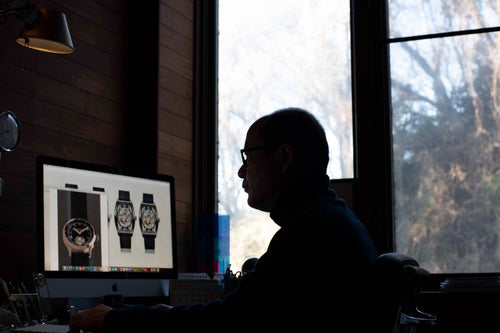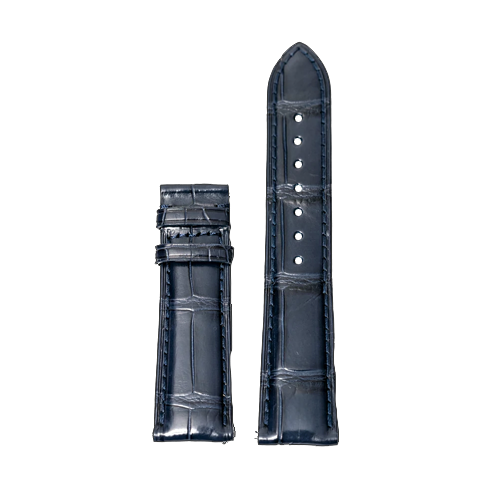Made in Japanの心に触れる旅~石川県・金沢市 ひがし茶屋街 金箔工芸さくだ
Journey to touch the heart of “Made in Japan” Kanazawa gold leaf craft shop at Higashi Chaya district, Kanazawa-city, Ishikawa pref.

さくだの作業場の壁には、平安時代を描いた洛中図と思われる金箔をふんだんに使った煌びやかな屏風絵が飾ってありました。100年以上も前から「さくだ」にあるということで、モチーフの由来のはっきりした事はわからないということでした。
On the wall of Sakuda's workshop, there was a gorgeous painting made with plenty of gold leaf cloud, probably a drawing of the capital from the Heian period. This folding screen picture was decorated here from more than 100years ago, so nobody knows what is the motif Cleary.
加賀友禅、九谷焼、金沢漆器等と並び、 金沢伝統工芸材料金沢箔。金箔は、金を金槌で叩いてごく薄く延ばし、箔状態にしたもの。
日本の金箔のほぼ100%が金沢で作られています。
金というと新潟・佐渡島のイメージが強いですが、金沢はその昔、金の鉱脈から砂金を含む土砂が川に流れて出来た土地でした。そこから、「金の沢」すなわち“金沢”という地名になったと言われています。かつては、ゴールド・ラッシュになった事もあるそうです。
<ひがし茶屋街>
加賀藩の時代の雰囲気を今も残す小京都とも言われるひがし茶屋街。茶屋は、芸妓が粋で雅な芸で客をもてなす「一見さんお断り」の大人の社交場。

花街の記憶をとどめる古い町並み。黒瓦と出格子をもつ古い建物が続いています。夜には店先に明かりが灯り、三味線が響く艶やかな通りとなります。
An old townscape remains of a leisure district. There are many old buildings with black tiles and latticework. At night, the storefronts are illuminated and the streets become enchanting with the sound of shamisen music.

重要文化財の茶屋の<志摩>のお座敷。お座敷太鼓は、大太鼓と締太鼓を対とし、出囃子の曲をもととした三味線の曲にあわせながら、打ち分けて演奏されます。金箔の屏風が部屋を華やかに演出。
Important cultural property, “Shima”, a teahouse seating area. The ozashiki taiko is a pair of large drums and shime taiko drums, and is played separately while being accompanied by shamisen music based on the music of the dehayashi. The gold leaf folding screen makes the room look gorgeous.
<金箔工芸さくだ>
金箔工芸の伝統に触れる為、ひがし茶屋街にある創業100年を誇る金箔工芸「さくだ」にお邪魔しました。

金箔は、金に少量の銀と銅を加え、ひたすら打ち延ばしてつくります。十円玉ほどの合金が畳1枚分もの大きさになり、厚みは1万分の1~1.2ミリ。まず1000分の1mmの厚さにしてから、箔打紙と呼ばれる紙と交互に重ねます。
その束を繰り返し叩き、1万分の1mmに伸ばしていきます。金の輝きをなくすことなく、均一に打ち延ばしていくには、非常に熟練した高度な技と根気が必要。
今は、箔打ちは、機械でやっていますが、昔は、手で打っていたので、1万分の1mmまで延ばすには、1日8時間叩いて10日以上もかかった気の遠くなるような根気のいる作業でした。
静電気を帯びやすい金箔は、湿度の高い場所での製造がよいとされ、箔打紙づくりには良質の水が欠かせないことから、金沢の気候風土が金箔工芸に合っていたことも箔産業の発展の要因のひとつと言われています。
加賀藩では、犀川の水を兼六園に引いた辰巳用水など水の供給が早くから整備されていました。また、加賀友禅には、反物の染色をマスキングする為の糊を流す「友禅流し」に犀川(雄々しい流れの男川)や浅野川(優美な流れの女川)が使われていました。

金箔は、手で触れると簡単に破れてしまう為、竹製の道具を使い、金箔を平らにするのにふっと息を吐いて作業が進められています。
The gold leaf easily breaks when touched, so the work is done by the bamboo tools with exhaling to flatten the gold leaf.

職人さんが革の板についた金粉を取り表面を滑らかにする作業をしていました。
A craftsman was working to remove gold powder from a leather board and smooth the surface.
そういえば、その昔、職人たちが、金箔を打つ時や細工中に飛び散った金粉を集める時に、「そば粉」を使ったことから、来る年にお金と縁が深くなるように「大みそかに蕎麦を食べるようになりました。それが「年越しそば」の由来だとか。(諸説あります)
金箔は、加賀藩の前田利家が1593年に作り始めたと言われています。
豊臣秀吉は、天守閣や調度品にも金箔を好んで使用し、聚楽第、伏見城近くからも前田家家紋である梅鉢紋入りの瓦をはじめ、大量の金箔瓦が出土しています。
徳川家康の時代に移り、金箔、銀箔の生産は幕府の経済体制を固める政策として、厳しく統制。「箔打ち禁止令」により江戸、京都以外の土地で厳しく禁じられました。
しかしながら、幕府が、箔打を禁止していた時でさえ、加賀藩では、箔の「隠し打ち」が行われて、限られた材料金箔を作る優秀な技術が極限まで研ぎ澄まされたと言われています。
そのような中、加賀藩は九谷焼や輪島塗、加賀蒔絵といった伝統工芸の発展に力を注ぎ、今日の工芸王国石川の礎を築きました。
1864年に加賀藩の御用箔打ち立てのお許しが出て、金沢の金箔工芸は、質量共に発展。江戸箔は途絶え、金沢箔の優位性が一気に高まりました。
第一次世界大戦の戦災で、それまでのヨーロッパの最大の箔産地であったドイツが壊滅的打撃をうけ、金沢の金箔産業は飛躍的に発展しました。
金沢の金箔産業は、数々の歴史の綾を潜り抜けて、今の地位を築き上げたのです。

Pâtisserie L'aube 花鏡庵 (パティスリー ローブ かきょうあん)
ミシュラン東京一つ星のパティシェ/平瀬祥子氏が
金沢・尾張町に開業したパティスリー&カフェ
チョコ・コーティングとパウダーの間にある金箔は、金継ぎ(陶磁器の割れやヒビを漆によって接着し、金で装飾して仕上げる伝統的な修復技法)をイメージ。
現在、金箔は、工芸品の他にお菓子や日本酒など食品にも使われて進化しています。
Pâtisserie L'aube Hanakyoan Michelin Tokyo one-star pastry chef/
A patisserie and cafe opened by Ms.Shoko Hirase in Owari-cho, Kanazawa.
The gold leaf between the chocolate coating and the powder is inspired by kintsugi (a traditional repair technique in which cracks of ceramics bonded with lacquer and decorated with gold). Currently, gold leaf is evolving and is being used in food products such as sweets and sake.

金箔と言えば、加賀百万石を彩る華やかなイメージでしたが、金箔職人の作業は、
気が遠くなるような地道な作業の繰り返しに驚きました。
金沢で箔産業が栄えた理由として、江戸幕府に隠れて金箔を作り続けた歴史のドラマもありました。金沢の気候風土も箔産業に合っていたのでしょう。
しかしながら、最大の要因は、長い冬の間も「忍耐強く作業を続けることができた北陸の職人気質」が金箔工芸の品質と技を高めていったのではないかと思います。
株式会社金銀箔工芸さくだ
本社・本店/〒920-0831 石川県金沢市東山1-3-27
営業時間 9:00 ~ 18:00 (季節により変動あり)
TEL 076-251-6777(電話受付 9:00 ~ 17:30)
FAX 076-251-6677
kinpakuya@goldleaf-sakuda.jp
Pâtisserie L'aube 花鏡庵(パティスリー ローブ かきょうあん)
〒920-0902 石川県金沢市尾張町2丁目4-13
定休日 火曜日、水曜日
営業時間 12時〜18時
カフェ営業 13時〜18時(17時30分last order)
✴︎ケーキ、プティガトーお取り置き等のご予約はお電話にて
TEL 076-254-0903
https://www.instagram.com/patisserie_laube/
WING イオンモール白山店
〒924-8777
石川県白山市横江町5001番地 1階1066区画
TEL:076-259-6610
FAX:076-259-6620
営業:10:00~21:00
HP:https://www.wing-rev.co.jp/
WING 金沢店
〒920-0981
石川県金沢市片町1-3-15
TEL:076-223-5582
営業時間:平日12:00~19:00 休祝日11:00~19:00
定休日:水曜日
Journey to touch the heart of “Made in Japan” Kanazawa Gold Leaf at Higashi Chaya district, Kanazawa-city, Ishikawa pref.
Along with Kaga Yuzen dyeing, Kutani pottery, Kanazawa lacquerware, etc., “Kanazawa gold leaf” is a traditional Kanazawa craft material. Kanazawa gold leaf is made by pounding gold with a hammer and rolling it into a very thin layer.
Almost 100% of Japan's gold leaf is made in Kanazawa.
When we think of gold, we tend to think of Sado Island in Niigata, but in the past, Kanazawa was a place where earth and sand containing gold dust from gold veins flowed into rivers. It is said that this is where the name of the place came from “Kanazawa.''(Gold Stream). It is said that there was once a gold rush.
Higashi Chaya District, also known as Little Kyoto, still retains the atmosphere of the days of the Kaga Domain. A teahouse is a social gathering place for adults where geisha entertain guests with their stylish and elegant performances.
In order to experience the tradition of gold leaf crafts, we visited Sakuda, a gold leaf craft shop in Higashi Chaya District that has a 100-year history.
Gold leaf is made by adding a small amount of silver and copper to pure gold, first making it 1/1000th of a millimeter thick, and then layering it alternately with paper called hakuuchigami. The bundle is pounded repeatedly and stretched to 1/10,000th of a millimeter.
An alloy the size of a 10-yen coin becomes the size of a tatami mat
It takes extremely skillful skill and patience to flatten the gold evenly without losing its shine.
Nowadays, foil stamping is done by machine, but in the past, it was done by hand, so it took more than 10 days of hammering for 8 hours a day to get the foil to 1/10,000th of a millimeter. It was a lot of patience.
Since gold leaf tends to be easily charged with static electricity, it is said that it is best to manufacture it in a humid place, and good quality water is indispensable for making foil stamping paper. The fact that Kanazawa's climate and natural features were suitable for gold leaf crafts also led to the growth of the gold leaf industry. It is said to be one of the factors behind the development of gold leaf industry.
In the Kaga domain, water supplies were established from an early stage, such as the Tatsumi Canal, which brought water from the Sai River to Kenrokuen Garden. Additionally, in Kaga Yuzen, the Saigawa River (a male river with a majestic flow) and the Asanogawa River (a female river with an elegant flow) were used to flow the paste to mask the dyeing of cloth.
Come to think of it, in the past, craftsmen used buckwheat flour when stamping gold leaf or collecting gold powder that was scattered during crafting. This is the origin of "Toshikoshi soba". People wished to bring the luck and gold(money) by eating buckwheat noodles in the end of the year.
It is said that Toshiie Maeda of the Kaga domain began making gold leaf in 1593.
Toyotomi Hideyoshi liked to use gold leaf for the castle tower and furniture, and a large number of gold leaf tiles have been excavated near Jurakudai and Fushimi Castle, including tiles with the Umebachi (Plum bowl) crest, the Maeda family crest.
In the era of Tokugawa Ieyasu, the production of gold and silver leaf was strictly controlled as a policy to solidify the economic system of the shogunate. Due to the Ban of making gold leaf, it was strictly prohibited in areas other than Edo and Kyoto.
However, even when the shogunate prohibited the stamping of gold leaf, it is said that in the Kaga domain, "hidden stamping" of foil was carried out by the excellent techniques for making gold leaf using limited materials.
In 1864, gold leaf making in Kanazawa was approved officially, at that time, Edo gold leaf making went out of the business.
During World War I, Germany, which had been Europe's largest leaf producing region until then, was suffered severely by the war, and Kanazawa's gold leaf industry developed rapidly.
When we think of gold leaf, we associate it with the glamorous color that is the symbol of prosperous Kaga domain “Hyakumangoku”, (yields one million koku of rice, indicators of economic prosperity)but the work of gold leaf craftsmen is repetitive task and they are incredibly patient.
There was a historical drama in which people continued to make gold leaf in secret from the Edo shogunate, but perhaps the most important factor was “the craftsmanship of people in Hokuriku (north region faced to Japan Sea), who were able to continue working patiently even during the long winter time, and improved the quality and skill of gold leaf crafts continuously.
Gold and Silver Leaf Crafts Sakuda Co., Ltd.
Head Office / 1-3-27 Higashiyama, Kanazawa City, Ishikawa Prefecture 920-0831
Business hours: 9:00 to 18:00 (subject to change depending on the season)
TEL 076-251-6777 (Telephone reception 9:00-17:30)
kinpakuya@goldleaf-sakuda.jp
Pâtisserie L'aube Hanakyouan (Patisserie Robe Kakyouan)
2-4-13 Owarimachi, Kanazawa City, Ishikawa Prefecture 920-0902
Closed: Tuesday, Wednesday
Business hours: 12:00-18:00
Cafe open from 13:00 to 18:00 (last order at 17:30)
✴︎For reservations for cakes, petit gateaus, etc., please call
TEL 076-254-0903
WING AEON MALL HAKUSAN
〒924-8777
Within the Yokoe-cho land readjustment project construction area, Hakusan, Ishikawa, Japan.
Plot 1066, 1st floor, 1st city block.
TEL: 076-259-6610
FAX: 076-259-6620
Open: 10:00-21:00
HP https://www.wing-rev.co.jp/
WING KANAZAWA
1-3-15, Katamachi, Kanazawa, Ishikawa 920-0981, Japan
Tel: 076-223-5582
Hours: 12:00-19:00 weekdays, 11:00-19:00
Closed: Wednesday




















